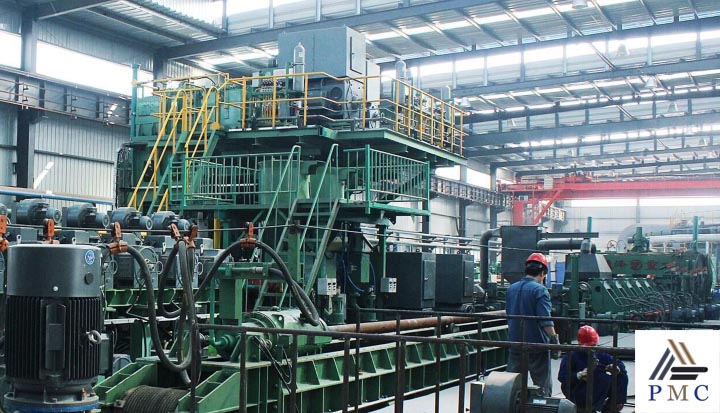
What are the Production Methods of Seamless Steel Pipes?
The former method is to pierce the tube with oblique rolls and then stretch it with a rolling mill. This method has a fast production speed, but has higher requirements on the processing performance of the tube blank, and is mainly suitable for the production of carbon steel and low-alloy steel tubes. The latter is to pierce the tube blank or ingot with a punch, and then extrude it into a steel tube with an extruder. This method is less efficient than the skew rolling method and is suitable for the production of high-strength alloy steel pipes. Both the skew rolling method and the extrusion method must first heat the tube blank or ingot, and the produced steel tube is called a hot-rolled tube. Steel pipes produced by hot working can sometimes be cold worked as required.

There are two methods of cold working: one is cold drawing, which draws the steel pipe through an extrusion die to make the steel pipe thinner and longer; the other method is cold rolling, invented by the Mennesmann brothers. Hot rolling mills are used for cold working. Cold working of seamless steel pipe can improve the dimensional accuracy and processing finish of the steel pipe, and improve the mechanical properties of the material.
1. Difference in production method
The production method of hot rolling is hot working, and the cold drawing is cold working. The main difference: hot rolling is rolling above the recrystallization temperature, and cold rolling is rolling below the recrystallization temperature.
Cold rolling is sometimes heated, but the temperature is relatively low because work hardening occurs after cold rolling. If the forming requirements of the material are relatively high, annealing treatment is required.
Cold rolling and hot rolling generally use sheets or profiles, while cold drawing generally uses cylindrical cross-section wire. In addition, hot-rolled sheets are generally steels with high alloy content and high strength, while cold-rolled sheets are low-carbon and low-alloy steels, which can improve strength and ensure surface quality. The material is cold rolled.
The difference between cold-drawn seamless steel pipe and hot-rolled seamless steel pipe is the difference between sheets. Due to their different manufacturing processes, seamless steel pipes are divided into hot-rolled (extruded) seamless steel pipes and cold-drawn (rolled) seamless steel pipes. Cold-drawn (rolled) pipes are divided into two types: round pipes and special-shaped pipes: cold-drawn steel pipes generally need to be drawn multiple times, and there must be corresponding stress relief annealing between each drawing to ensure the next smooth cold drawing.
In terms of appearance, cold-rolled seamless steel pipes tend to have small diameters, while hot-rolled seamless steel pipes tend to have large diameters. The precision of cold-rolled seamless steel pipe is higher than that of hot-rolled seamless steel pipe, and the price is also higher than that of hot-rolled seamless steel pipe. Cold-drawn seamless pipes are generally smaller in diameter, mostly below 108mm. In particular, the outer diameter of cold-drawn seamless pipes requires high precision, and the length of cold-drawn seamless pipes is generally shorter than that of hot-rolled seamless pipes. The wall thickness is cold, and the seamless pipe is more uniform than the hot-rolled seamless pipe.
3. Difference in performance
Hot rolling and cold drawing are the difference in production process. Hot rolling is processing at high temperature without changing the structural properties of the metal. Cold drawing, on the other hand, involves perforating round bars at high temperatures and then cold drawing on a drawing machine, which affects the crystal structure of the metal without tempering. In general, hot rolling has better mechanical properties than cold rolling. Heat treated steel has improved tensile strength, yield strength, ductility and toughness. In addition, heat treatment can eliminate residual stress, while cold rolling may generate residual stress due to uneven yield deformation of steel during processing, which has a great impact on stability.
Go here if you are looking for " Hot Rolled Seamless Steel Pipe "


